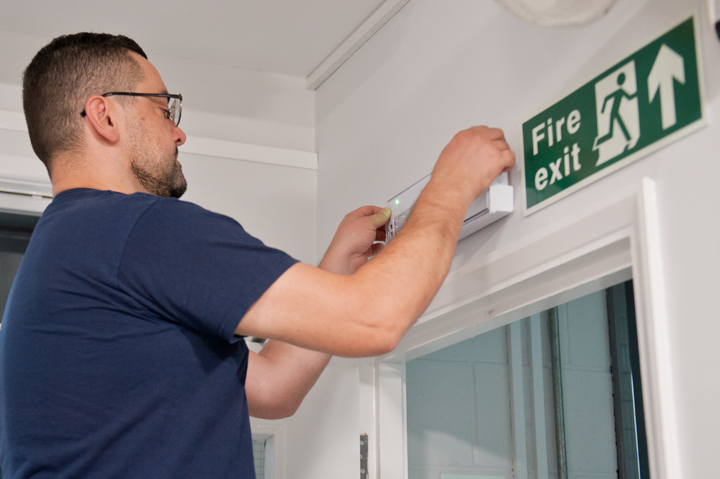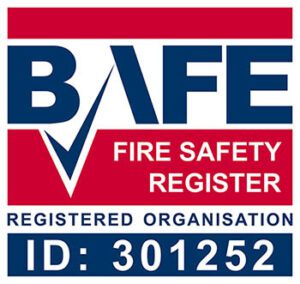Emergency Lighting Servicing and Testing across London and the South-East.
The main purpose of emergency lighting is to illuminate escape routes, although it also allows occupants to find fire-fighting equipment, if there’s a fire.
UK fire safety legislation stipulates that emergency lighting must undergo a full test once a year and be ‘flick-tested’ at least once a month.
Emergency lighting is usually powered by rechargeable batteries that self-charge from the mains power or other power source.
The lights, known as ‘luminaries’, are either on constantly (‘maintained’) or are triggered by an interruption in the main power supply (‘non-maintained’).
A test checks that your system and luminaries are in full working order up to the stipulated British Standard by simulating a mains power cut.
The minimum permitted duration of an emergency escape lighting system is 1 hour and so your annual test will check that all of your lights turn on and stay on for at least 60 minutes and for as long as 3 hours, depending on the type of batteries you are using.
Our industry-approved engineers carry out both 1 hour and 3 hour tests and keep most types of battery, bulbs, and light fittings on their vans so they can quickly fix any issues during the service, without needing a return visit.
They will also record all findings in your log book and leave you on site with the relevant legal documentation.
Call our team today to book a test and service on – 0800 157 1113
How we can help
- Emergency lighting test & servicing across London, Surrey and the South-East
- Fast response – get booked the same week
- All types of emergency lights tested and serviced
- Fire industry approved engineers
- Common spares carried on vans to reduce repeat visits and cost
- All legal documentation left on site
- Combine your emergency lighting test with your fire alarm service to save money
If you are responsible for commercial premises which have emergency lighting installed, then you will need to make sure that either you, a designated ‘competent person‘, or a fire safety company undertake the regular emergency lighting tests as required by law.

Monthly emergency lighting test
The purpose of the monthly test is to briefly check that all luminaries are in place, working and clean. This test can be carried out by you or a member of your team, as long as they follow the correct procedures.
How to test emergency lighting on one circuit, or a number of large circuits:
- Simulate a mains failure (usually with an emergency lighting test-key supplied by your fire safety provider)
- Walk around the circuit checking that every emergency light is illuminated
- Switch the mains lighting back on
- Walk around the circuit for a second time to check that all batteries are charging
- The test should be carried out in as short a time as possible to preserve the light fittings and batteries
If your emergency lights work individually, each with its own switch, then you will only need to walk around the circuit once as you will be able to test both that the light works and that the battery is charging in one go.
Once you’ve carried out your emergency lighting test you must:
- Record the test in your log-book
- Make a note of any failures
- Arrange repairs as soon as possible
Because an emergency lighting test requires switching off the main lights circuit (to simulate a power cut), it can be disruptive for some businesses so you may want to consider carrying out this test out of hours, perhaps at dusk so that it is easy to see if the emergency lights are illuminated.
Annual emergency lighting test
We recommend that your annual test is carried out by a fire safety professional, otherwise you risk being in breach of UK fire safety regulations which can bring tough penalties.
Your annual emergency lighting test takes the same form as the monthly test, with the difference that it should last for either 1 hour or 3 hours, depending on the type of batteries you have in your system.
It’s called a ‘full discharge’ test and it tests that your batteries last as long as they should and meet the minimum legal requirement. Any failed batteries or lighting tubes should be replaced as quickly as possible following the test, and any more serious faults should be immediately investigated.
If your emergency lighting needs testing, then get in touch with our friendly team today for prices and to book an appointment.



